| Landschaft bei Ubirr im Kakadu-Nationalpark (Northern Territory). Zebrafinken haben hier ihr nördlichstes Verbreitungsgebiet.
Landscape near Ubirr in Kakadu National Park (Northern Territory). Zebra Finches have their most northern distribution range here. |
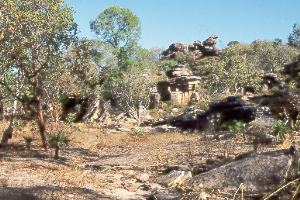 |
| Siedlung und Kultstätte der Ureinwohner in Ubirr im Kakadu-Nationalpark. Unter dem vorspringenden Felsdach findet sich eine gut erhaltene Zeichnung des ausgerotteten Beutelwolfes (Thylacinus cynocephalus).
Old aboriginal settlement and place of worship in Ubirr in Kakadu National Park. Under the protruding rock roof there is an well preserved painting of the exterminated Thylacine ('Tasmanian Tiger' or 'Tasmanian Wolf' respectively, Thylacinus cynocephalus) |
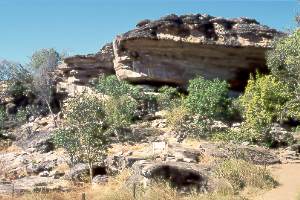 |
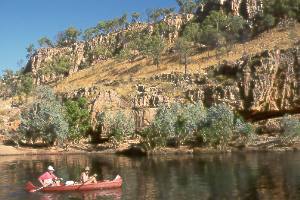 |
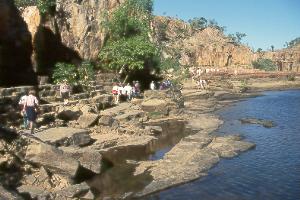 |
|
Katherine Gorge: eine malerische, von der Zivilisation fast unberührte Felsenschlucht, die man in zwei Etappen mit dem Ausflugsbooten befahren kann – oder einzeln mit dem Kanu. Katherine Gorge: a picturesque rocky valley almost untouched by civilisation; it can be travelled in two stages on pleasure boats – or individually in a canoe. |
||
| Typisches Grasland im Kakadu-Nationalpark (Northern Territory). In der Regenzeit mit ihren riesigen Überschwemmungen müssen Zebrafinken hier nach Süden ausweichen.
Typical grassland in Kakadu National Park (Northern Territory). In the rainy season with its huge flooding Zebra Finches here are forced to move to the south. |
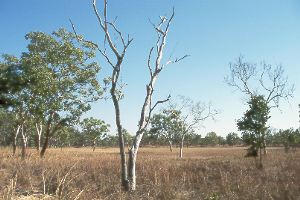 |
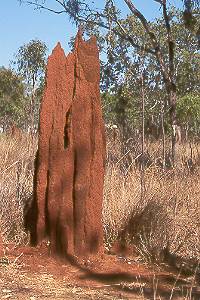 |
Termitenhügel bedecken das aride Hinterland Australiens zu Millionen.
Termite heaps cover the arid Australian outback by the millions. Burt's Bluff, ein großer Felsen nahe Alice Springs, der vor Jahren durch ein Bild von Albert Namatjira, einem eingeborenen Maler, berühmt wurde. Burt's Bluff, a large rock that was made famous many years ago through a picture by Albert Namatjira, an Aboriginal painter. |
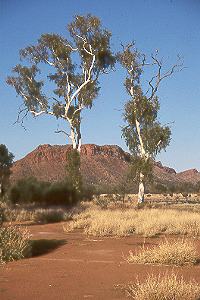 |
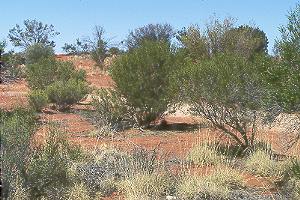 |
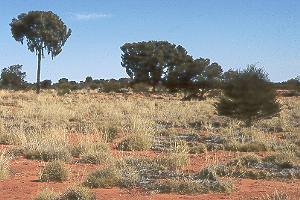 |
|
Zebrafinkenland nahe dem "Erldunda Oaks Resort", Zentralaustralien (Northern Territory). Die Akazien- und Mulga-Sträucher und -Bäume und Spinifex-Gräser sind typisch für die Gegend. Spinifex stirbt mit der Zeit im Zentrum ab, wird dort grau und bildet typische Kreise. Zebra Finch land near "Erldunda Oaks Resort", Central Australia (Northern Territory). The Dead Finish and Mulga scrub and trees and Spinifex grass tussocks are typical of this area. Spinifex gradually dies off in the centre, becoming grey there and forming typical circles. |
||
| Uluru, der weltberühmte "Ayers Rock" im Herzen Australiens: aufgrund seiner Wasserstellen ein Heiligtum der Aborigines und Zebrafinkenhabitat. Obwohl die ortsansässigen Aborigines bitten, ihren heiligen Felsen nicht zu besteigen, halten sich viele Toristen nicht daran.
Uluru, the world-famous "Ayers Rock": Due to its watering places it is both an Aboriginal sanctuary and a Zebra Finch habitat. Although the local Aborigines ask not to climb their holy rock many tourists do not comply. |
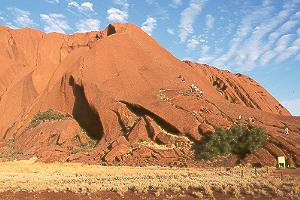 |
| Uluru bei Sonnenaufgang: Die Farben wechseln alle paar Sekunden – kein Wunder, daß ein Besuch im Morgengrauen für viele Touristen ein "Muß" ist.
Uluru at sunrise: The colours keep changing at intervals of a few seconds – no wonder a visit at dawan is a must with most tourists. |
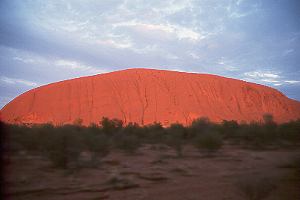 |
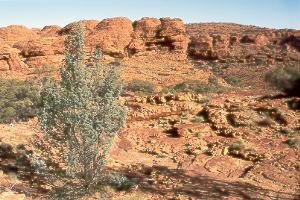 |
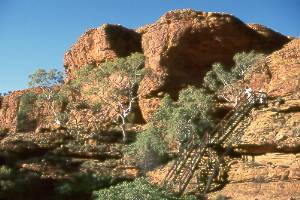 |
|
King's Canyon bietet dem Besucher eine atemberaubende, majestätische Kulisse. An einigen Stellen wurde er durch Treppen für den Tourismus erschlossen. King's Canyon offers a breathtaking, majestic scenery to the visitor; it has been opened up for tourism by means of ladders in some places. |
||
| Eukalyptsbäume in einem ausgetrockneten Flußbett nahe Ormiston Gorge, Zentralaustralien: Wenn solche Restwassertümpel schrumpfen, wird das Wasser zunehmend ungenießbar und sogar giftig.
Eucalyptus trees in a dried up riverbed near Ormiston Gorge, Central Australia: When such pools or "lagoons" shrink their water becomes increasingly undrinkable and even poisonous. |
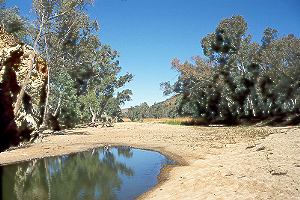 |
| Die Flinders Ranges, ein Nationalpark ein paar Autostunden nördlich von Adelaide, sind ein kostbares klimatisches Rückzugsgebiet der in Südaustralien endemischen Tier- und Pflanzenwelt. Auch das Rote Riesenkänguruh (Macropus rufus) ist hier zu Hause.
The Flinders Ranges, a national park a few hours' drive north of Adelaide, are a precious climatic retreat for plants and animals endemic to South Australia. The Red kangaroo (Macropus rufus) is at home here, too. |
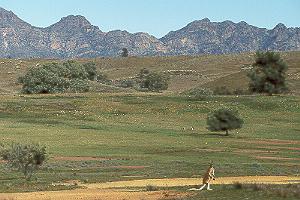 |
| Die Vegetations in Flinders Ranges mutet oft sehr europäisch an. Die Tierwelt – Kanguruhs, Emus und auch Zebrafinken – unterscheidet sich allerdings.
The vegetation in the Flinders Ranges looks very European in may places. The fauna – kangaroos and wallabies, emus and also Zebra Finches – however makes a difference. |
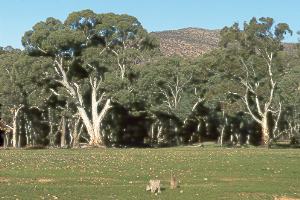 |
| Kangaroo Island, eine große Insel südlich von Adelaide, beherbergt nicht nur Känguruhs und Koalas, sondern auch Seelöwen und Australische Seebären. Das kühle und rauhe Seeklima schließt Zebrafinken aus.
Kangaroo Island, a large island south of Adelaide, houses not only kangaroos and koalas, but also sea lions and New Zealand Fur Seal. The cool and rough maritime climate excludes Zebra Finches. |
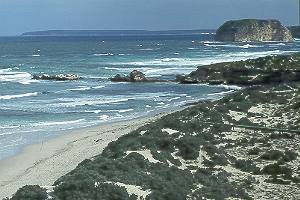 |